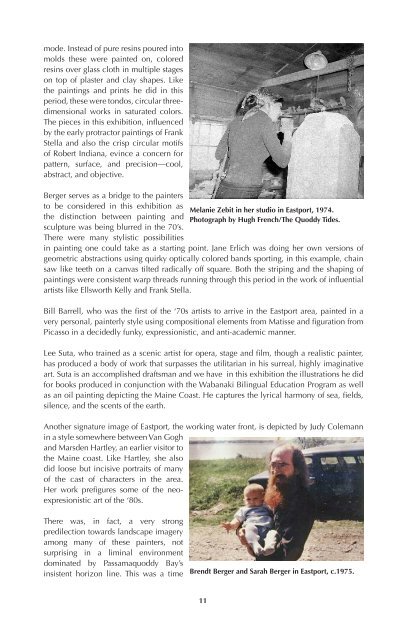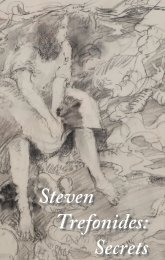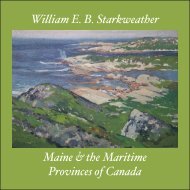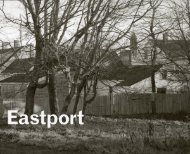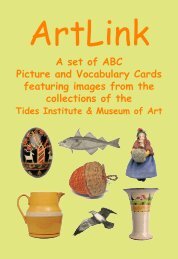70s Catalogue
Create successful ePaper yourself
Turn your PDF publications into a flip-book with our unique Google optimized e-Paper software.
mode. Instead of pure resins poured into<br />
molds these were painted on, colored<br />
resins over glass cloth in multiple stages<br />
on top of plaster and clay shapes. Like<br />
the paintings and prints he did in this<br />
period, these were tondos, circular threedimensional<br />
works in saturated colors.<br />
The pieces in this exhibition, influenced<br />
by the early protractor paintings of Frank<br />
Stella and also the crisp circular motifs<br />
of Robert Indiana, evince a concern for<br />
pattern, surface, and precision—cool,<br />
abstract, and objective.<br />
Berger serves as a bridge to the painters<br />
to be considered in this exhibition as<br />
the distinction between painting and<br />
sculpture was being blurred in the 70’s.<br />
There were many stylistic possibilities<br />
Melanie Zebit in her studio in Eastport, 1974.<br />
Photograph by Hugh French/The Quoddy Tides.<br />
in painting one could take as a starting point. Jane Erlich was doing her own versions of<br />
geometric abstractions using quirky optically colored bands sporting, in this example, chain<br />
saw like teeth on a canvas tilted radically off square. Both the striping and the shaping of<br />
paintings were consistent warp threads running through this period in the work of influential<br />
artists like Ellsworth Kelly and Frank Stella.<br />
Bill Barrell, who was the first of the ‘<strong>70s</strong> artists to arrive in the Eastport area, painted in a<br />
very personal, painterly style using compositional elements from Matisse and figuration from<br />
Picasso in a decidedly funky, expressionistic, and anti-academic manner.<br />
Lee Suta, who trained as a scenic artist for opera, stage and film, though a realistic painter,<br />
has produced a body of work that surpasses the utilitarian in his surreal, highly imaginative<br />
art. Suta is an accomplished draftsman and we have in this exhibition the illustrations he did<br />
for books produced in conjunction with the Wabanaki Bilingual Education Program as well<br />
as an oil painting depicting the Maine Coast. He captures the lyrical harmony of sea, fields,<br />
silence, and the scents of the earth.<br />
Another signature image of Eastport, the working water front, is depicted by Judy Colemann<br />
in a style somewhere between Van Gogh<br />
and Marsden Hartley, an earlier visitor to<br />
the Maine coast. Like Hartley, she also<br />
did loose but incisive portraits of many<br />
of the cast of characters in the area.<br />
Her work prefigures some of the neoexpresionistic<br />
art of the ‘80s.<br />
There was, in fact, a very strong<br />
predilection towards landscape imagery<br />
among many of these painters, not<br />
surprising in a liminal environment<br />
dominated by Passamaquoddy Bay’s<br />
insistent horizon line. This was a time<br />
Brendt Berger and Sarah Berger in Eastport, c.1975.<br />
11


